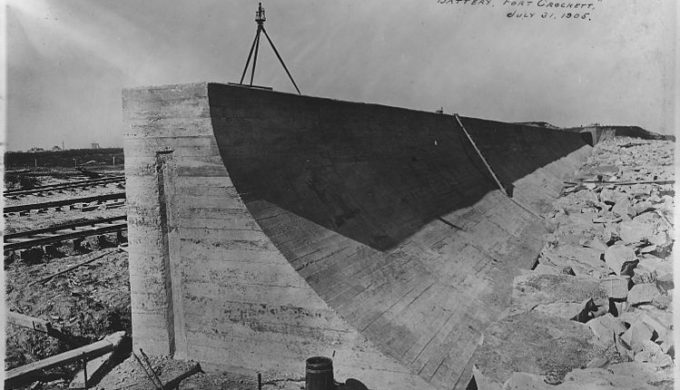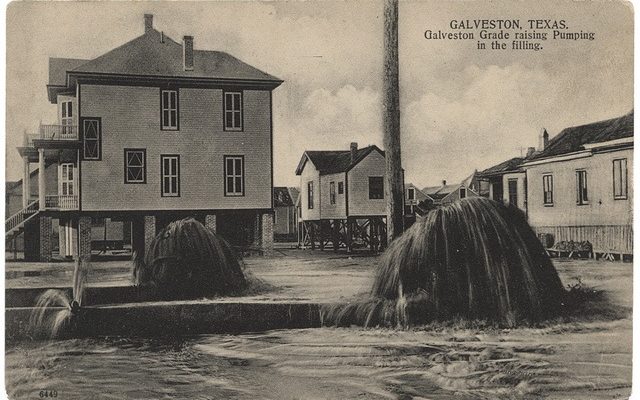One September day in 1900 forever changed the face of Galveston Island. The infamous storm of 1900 swept over the island, killing 6000 people who, in the days before weather warnings, remained unaware of the coming danger. Much of the damage and loss of life resulted from the storm surge. To protect from future storms, engineers devised an ambitious plan that would require raising Galveston a full story above its existing level.
History
Going Up: Raising Galveston a Full Story After the Storm of 1900
Galveston Island
Despite its flourishing city of 44,000 prior to the hurricane of 1900, Galveston Island was little more than a sandbar in the Gulf of Mexico. Its land was barely above sea level. Few storms plagued the island for years before 1900, which allowed the island’s population to grow. People flocked to Galveston for its booming port business and for its cooling sea breezes that made Texas summers bearable. In those days, weather satellites and radar did not exist. Weather forecasting was still in its infancy, and early storm warnings did not exist. This would prove disastrous for the island.
Hurricane of 1900

Photo: Wikimedia Commons
The storm of 1900 ravaged the island. Waves and storm surge broke apart houses and carried them further inland, causing more havoc. Thousands died, many from drowning. The devastation led to the downfall of Galveston as a major port on the Gulf of Mexico and the allowed for the rise of Houston’s port. But the islanders refused to abandon their home, and plans began shortly after the storm to prevent such a tragedy in the future.
The Plan for Raising Galveston

Photo: Wikimedia Commons
Only one part of protecting the island called for raising Galveston eight to 17 feet. The other portion of the plan required a three-mile-long seawall along the Gulf of Mexico side of the island. This 17-foot wall would hopefully protect the island from storm surge waves overcoming the city. Of these two projects, the seawall proved the less ambitious. But how would the engineers, using early 20th-century technology, lift all the buildings on the island almost a full story higher?
How Raising Galveston Happened

Photo: Flickr/SMU Central University Library
When it came to raising Galveston, crews began their work in 1903, lifting the city a section at a time. In addition to buildings, other structures and components of infrastructure also had to be raised higher. The locations closest to the seawall would be raised the highest, whereas those closer to the Galveston Bay side of the island would not need to be lifted as high. Generally, the plan allowed for the island to sloped downward toward the bay. Buildings constructed at ground level had to get lifted with jacks. One of the most amazing feats accomplished during the raising of Galveston was how St. Patrick’s Church, all 3,000 pounds of it, was picked up with jacks.
Once engineers raised the buildings, they pumped a mixture of water and sand beneath the buildings. Slowly draining the water left the sand behind for the building to rest upon. Because homeowners had to incur the cost of raising their homes, some opted to just fill in their ground floors with dirt and live on the second floors and above. By 1911, the raising Galveston plan lifted 500 city blocks up eight to 17 feet higher. Even today, this still stands as a major feat of engineering.
References:



